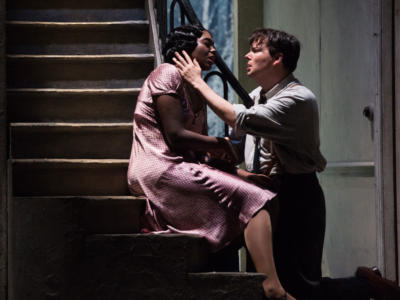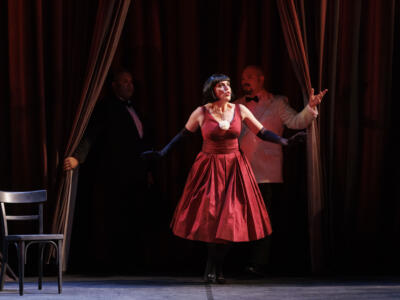Operas based in Paris
The image of Paris as the city of love is one we know well, especially thanks to the famous stories that have been inspired by the capital itself. It’s no surprise that a place, famed for its romance, elegance and drama has been the setting for some of the best-known operas in the repertoire.
Have a read to see how (and why) Paris has inspired these famous operas.
The Merry Widow - Franz Lehár
Video
Written by a Parisian playwright and based in the capital itself, The Merry Widow isn’t always the first opera that springs to mind when thinking of operas based in Paris. This is most likely due to the fact Lehár’s romantic comedy focuses on the crumbling (and fictional) country of Pontevedro.
Premiered in 1905, The Merry Widow highlights the glitz and glamour of the Parisian elite at the turn of the twentieth century, a period that we now know as ‘La Belle Époque’. Paris during this time (from around 1870 to 1914) was a golden age for the arts and architecture, parties and frivolity.
One of the main settings for the opera is the nightclub Maxim’s. It is at this club that the Parisian bourgeoisie flock to, as they would have in the entertainment venues of the time, like the newly-built Moulin Rouge. If all these ties to Paris’s entertainment heyday weren’t enough, cabaret dancers performing the can-can – frilly dresses and all – will transport you back to La Belle Époque!
La bohème - Puccini
Video
It’s no surprise that the most romantic opera in the repertoire is set in the city of love.
La bohème is based on Scènes de la vie de bohème, the semi-biographical work by French novelist Henri Murger. Murger experienced life first-hand as a struggling writer in Bohemian Paris in the 1840s.
Paris’s Latin Quarter (in which both the opera and novel is set) began being known as a hub for young people as early as 1257, when France’s oldest university, La Sorbonne, was founded there. The Latin Quarter even gets its name from the common language of the university students and scholars, who came from all across Europe.
This area of Paris was (and still is) filled with cheap cafés and bars, one of which has been immortalised in La bohème: Café Momus. As it was in real life, the café is somewhere where the bohemians of nineteenth-century Paris meet.
Watch out for it in Jonathan Miller’s production.
La traviata - Verdi
Video
Verdi based his romantic tragedy on La Dame aux Camélias, a novel by the born and bred Parisian, Alexandre Dumas.
Dumas was inspired to write La Dame aux Camélias after a brief love affair with the famous French courtesan Marie Duplessis. In nineteenth-century Paris (and Europe), courtesans were the mistresses of the French elite. Their place in society of the time was a complex one; their wealth from their bourgeoisie clientele allowed them to experience life (to some degree) as the upper class could. Although, they still faced stigma in a similar way to that of the lower class sex workers.
The heroine of Verdi’s opera, Violetta (Marguerite, in the novel), experiences these societal stigmas first hand.




